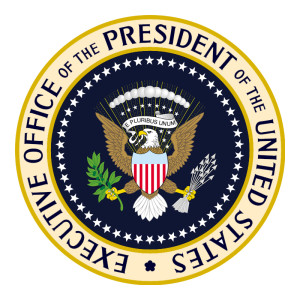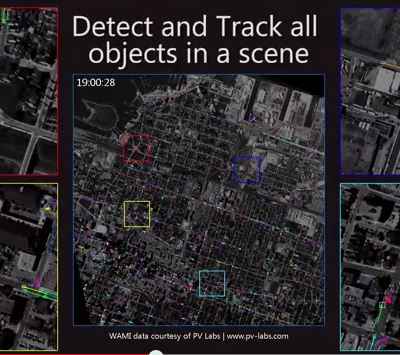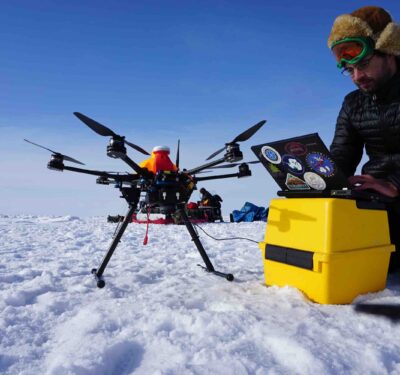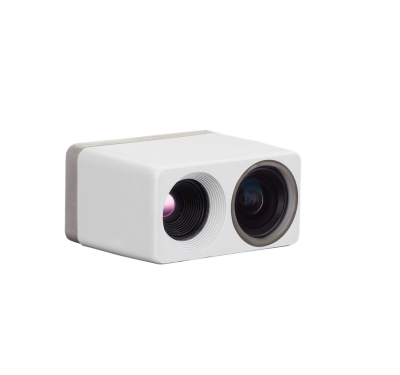 [UPDATED 1/30/2015]
[UPDATED 1/30/2015]
January drew to a close without publication of the long awaited rule for small unmanned aircraft as federal officials continued to review the draft language and take input on what elements should be included.
The scope of their task appeared somewhat smaller, however, after the Federal Aviation Administration issued a statement late Friday saying a key document had been updated with incorrect information. That document, posted on a White House website, said the FAA would propose standards for all Unmanned Aircraft Systems (UAS) including models and toys. The Friday statement referred to an “up to date” summary that did not mention models and toys.
The proposed rule, which was written by the FAA, is expected to set the parameters for operation in the United States of unmanned aircraft weighing 55 lbs. or less. Draft language for the small UAS rule (sUAS) will be published in the Federal Register at which point the public will have an opportunity to comment. Until then, no one outside of the federal government is supposed to see the rule, which is being anxiously awaited by firms impatient to offer flight-based services. Those companies are largely barred from operating UAS commercially until the final rule is in place.
The process is now in the hands of the Office of Information and Regulatory Affairs (OIRA), a part of the White House’s Office of Management and Budget. OIRA reviews all significant rulemakings, takes input from stakeholders on what they would like to see included and does a cost-benefit analysis.
Review of Rule Extended
OIRA has 90 days to conduct such reviews with the option of extending that up to another 30 days. The initial 90 days for the sUAS rule should have been up on January 23. Government records show, however, that OIRA was still meeting with stakeholders as late as January 16 — and Inside Unmanned Systems has learned that was not the last such gathering.
Mark McKinnon, a partner at the Washington law firm of McKenna Long and Aldridge, and a founding member of its UAS practice, said he attended a meeting between OIRA and stakeholders on Jan. 28 — suggesting there could be some additional delay before OIRA finalized its input. A summary of the review process on the OIRA web site Jan. 30 also said the costs and benefits were still to be determined.
Frustrated UAS advocates have been pushing for a quicker rulemaking in light of the surge in interest in unmanned systems and increased competition from other countries. They grew hopeful when President Obama, reacting to the crash of a small, recreational drone on the White House lawn, said he wanted to put a regulatory structure in place “that makes sure that these things aren’t dangerous and that they’re not violating people’s privacy.”
“The president’s comments echo what we have been saying,” said Brian Wynne, president & CEO of the Association for Unmanned Vehicle Systems International (AUVSI). “The FAA needs to move forward with the rulemaking process immediately to allow industries from agriculture to oil and gas to realize the benefits of this technology.”
Impact on Model Aircraft
The Academy of Model Aeronautics (AMA), the world’s largest model aviation association, issued a statement saying more regulation was not the answer.
“The Washington, DC, airspace is some of the most heavily regulated airspace in the world, and all aircraft operations are currently prohibited in the vicinity of the White House. Despite the existing regulations, a quadcopter still made its way onto the White House lawn this week,” said AMA President Bob Brown. “Community-based programming is the key to safe and responsible flying, as our organization’s 78-year history has shown.”
[NOTE: In response to the incident the maker of the crashed drone, SZ DJI Technology Co. of Shenzhen, China, said it would issue a software update that would prevent its aircraft from flying within 15.5 miles of downtown Washington, D.C., according to news reports.]
Brown said the FAA’s recent interpretation of the Special Rule for Model Aircraft had “complicated our working relationship.”
“But it is our hope, he said, “that the agency will work with us to forge a path forward for the recreational community that finds common ground on the Interpretive Rule and leverages AMA’s deep expertise when it comes to safe and responsible flying.”
That path appeared destined to become far rockier when the OIRA web site was updated to say the rule would cover model and toy unmanned aircraft. “The NRPM (notice of proposed rulemaking)” the posting said, “also proposes regulations for all sUAS, including operating standards for model aircraft and low performance (e.g., toy) operations, to increase the safety and efficiency of the NAS.”
The OIRA page also said the new rule “would result in the regular collection of safety data from the user community” to help the FAA develop new regulations and expand sUAS access to the NAS.
That OIRA posting could still be found Jan. 30 on the RegInfo.gov site.
On Friday evening, Jan. 30, the FAA sent the following statement to Inside Unmanned Systems:
It has come to our attention that in December 2014, the www.reginfo.gov site was updated with incorrect information stemming from the 2014 Fall Unified Agenda and Regulatory Plan regarding the scope of the FAA’s small unmanned aircraft systems rulemaking action. The FAA is working to correct these errors. For up to date information regarding the scope and timing of this rulemaking, please refer to the DOT Significant Rulemaking Report available at www.dot.gov/regulations/report-on-significant-rulemakings. All model aircraft operators are required to operate in accordance with the statutory requirements for model aircraft operations set forth in section 336 of the FAA Modernization and Reform Act of 2012. For more information on these requirements, please review the do’s and don’ts for model aircraft operations.
The scope of work described in the Department of Transportation rulemaking report is much more succinct. It does not mention standards for models or toy UAS or the collection of safety data.
“This rulemaking,” the DoT report says, “would adopt specific rules for the operation of small unmanned aircraft systems (sUAS) in the national airspace system. These changes would address small unmanned aircraft registration and marking, certification of their airmen, and operational requirements and limitations in order to increase the safety and efficiency of the national airspace system.”





